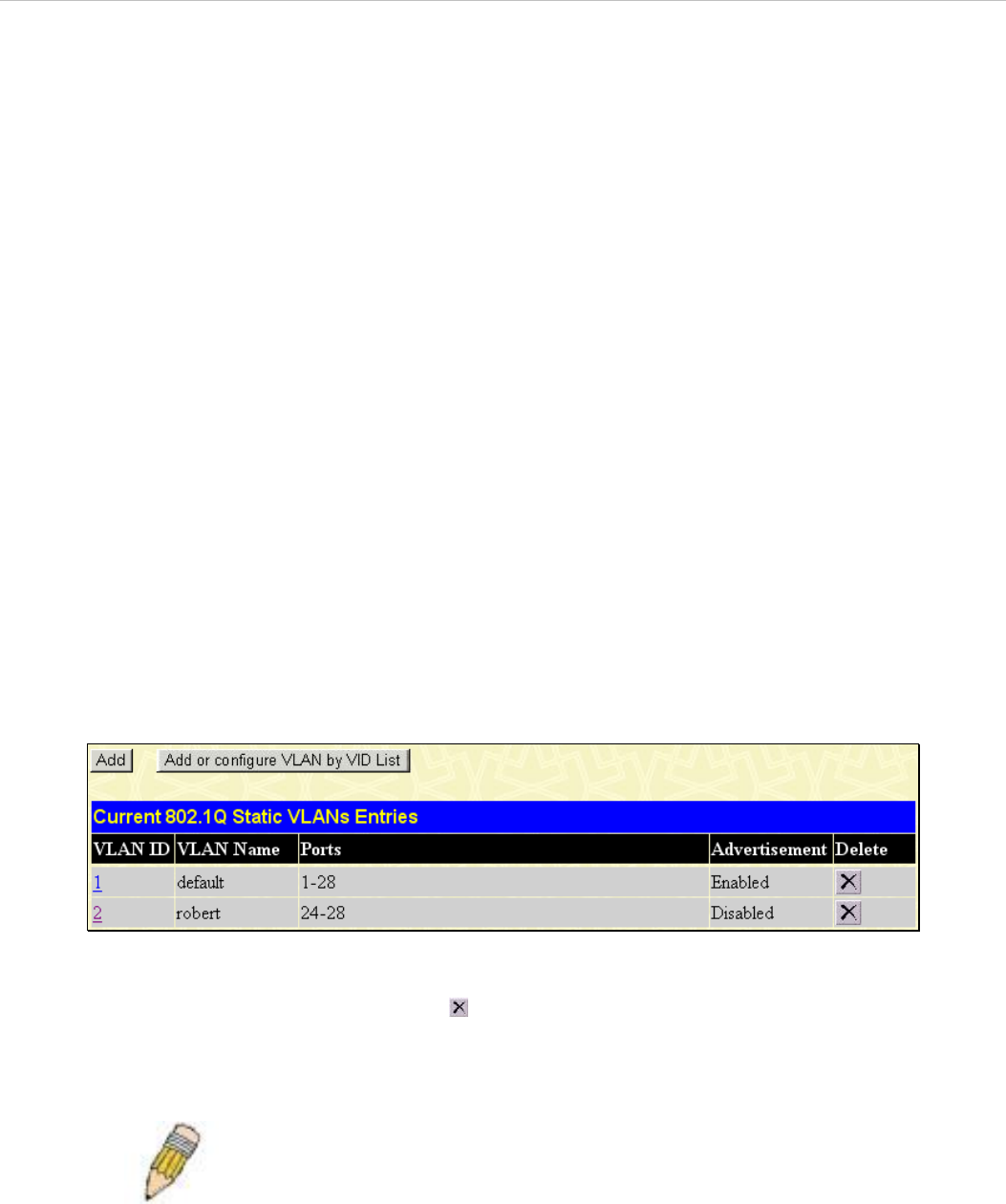
xStack DES-3800 Series Layer 3 Stackable Fast Ethernet Managed Switch
80
regulating traffic and routing on the Service Provider switch. This information is then routed to the Service Provider’s main
network and regarded there as one VLAN, with one set of protocols and one routing behavior.
Regulations for Double VLANs
Some rules and regulations apply with the implementation of the Double VLAN procedure.
1. All ports must be configured for the SPVID and its corresponding TPID on the Service Provider’s edge switch.
2. All ports must be configured as Access Ports or Uplink ports. Access ports can only be Ethernet ports while Uplink ports
must be Gigabit ports.
3. Provider Edge switches must allow frames of at least 1522 bytes or more, due to the addition of the SPVID tag.
4. Access Ports must be an un-tagged port of the service provider VLANs. Uplink Ports must be a tagged port of the service
provider VLANs.
5. The switch cannot have both double and normal VLANs co-existing. Once the change of VLAN is made, all Access
Control lists are cleared and must be reconfigured.
6. Once Double VLANs are enabled, GVRP must be disabled.
7. All packets sent from the CPU to the Access ports must be untagged.
8. The following functions will not operate when the switch is in Double VLAN mode:
• Guest VLANs
• Web-based Access Control
• IP Multicast Routing
• GVRP
• All Regular 802.1Q VLAN functions
Static VLAN Entry
Click L2 Features > VLAN > Static VLAN Entry to open the following window:
Figure 7- 6. Current 802.1Q Static VLANs Entries window
The Current 802.1Q Static VLAN Entries window lists all previously configured VLANs by VLAN ID and VLAN Name. To
delete an existing 802.1Q VLAN, click the corresponding
button under the Delete heading.
To create a new 802.1Q VLAN, click the Add button in the 802.1Q Static VLANs window. A new window will appear, as
shown below, to configure the port settings and to assign a unique name and number to the new VLAN. See the table below for a
description of the parameters in the new window.
NOTE: After all IP interfaces are set for your configurations, VLANs on the
switch can be routed without any additional steps.


















